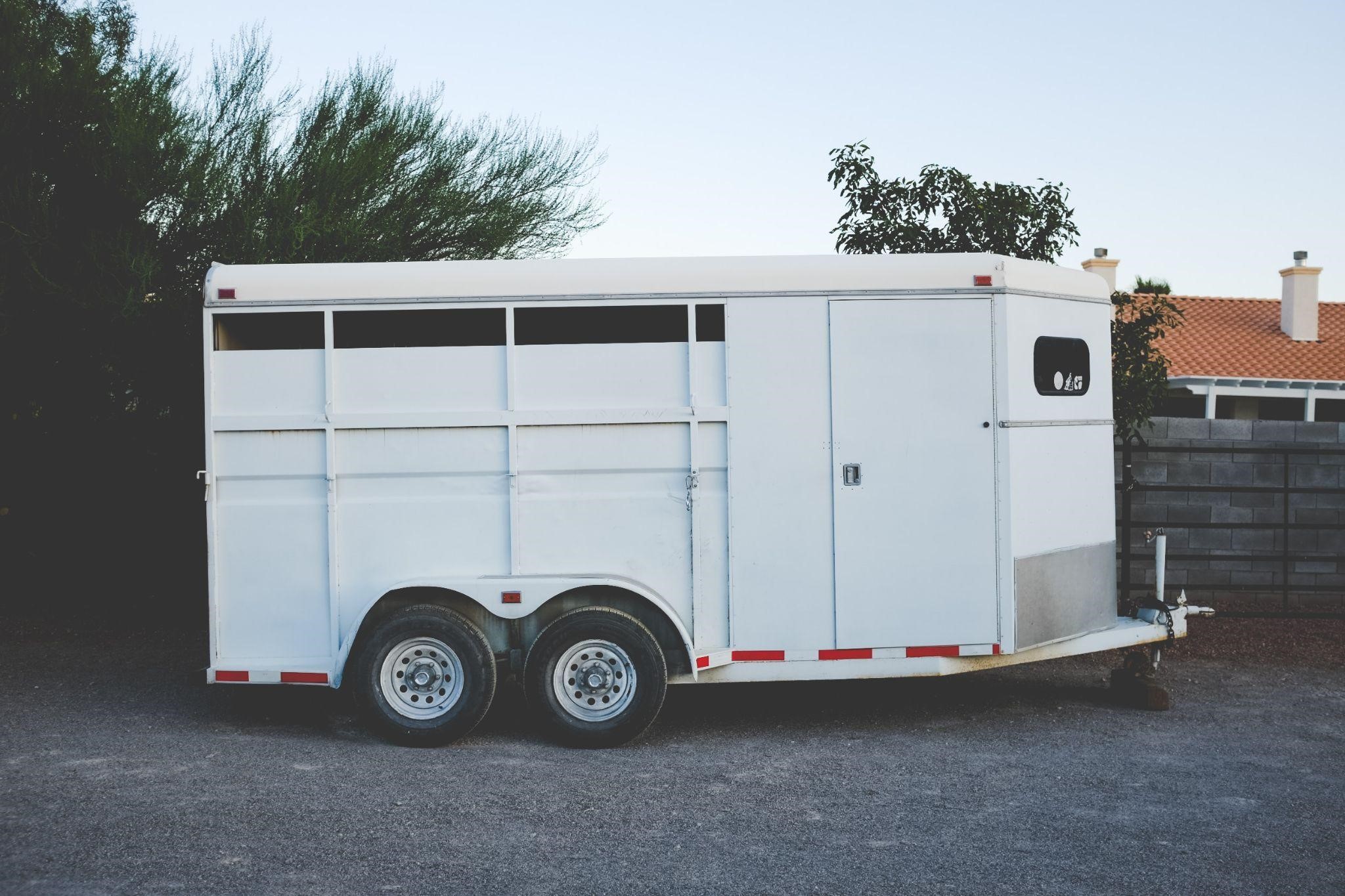Open trailers are usually used in construction transportation for your materials and equipment; however, some would prefer to use enclosed cargo trailers. This is a safer way and has a lesser risk of tools falling off the vehicle because the enclosed ones have covering to protect the materials.
When hauling an enclosed cargo trailer, especially with heavy construction tools and materials inside, be mindful when driving and you should always be at a slower speed for greater control whenever your vehicle or trailer needs to stop suddenly.
Construction Applications
Enclosed cargo trailers are an ideal solution for safely transporting construction materials, machinery, and equipment between job sites. Their sturdy walls and roofs keep contents protected from weather elements like rain and dust while traveling over long distances.
Furthermore, enclosed cargo trailers come equipped with additional security features to deter theft of their contents.
When loading an enclosed cargo trailer, it is essential that the weight be distributed evenly throughout. This will help avoid heavy items shifting during transport and potentially damaging other contents of the trailer. You can click the link: https://www.wikihow.com/Load-a-Trailer for more information about how to load a trailer correctly.
Furthermore, placing larger anchor points near the front will provide stability and support for other items stored inside.
Tie-downs and straps should be used to further prevent shifting during transport, which may include ratchet straps, cam buckle straps or rope depending on the nature and weight of your cargo. Also make sure that they are all in good condition before driving away.
Emergency equipment should also be included in your trailer, such as flares, water, jumper cables and first aid supplies. You can click the link to learn more about first aid kits. This is particularly essential during wintertime when freezing temperatures and slippery roads make stopping difficult.

High Winds
Utility trailers provide an efficient means of transporting tools and supplies to jobsite locations; however, their open design exposes your materials to extreme weather conditions such as heavy rainfall, high winds, and snowfall. On the other hand, enclosed cargo trailers protect them from these extreme elements by keeping it dry. This limits damage and financial loss for both you and your customers.
Before any trip, the first step to ensure trailer safety is inspecting it thoroughly. Check all tires (including the spare), tire pressures, condition, lights and signals, hitch security as well as attachment of safety chains to vehicles securely.
Finally, ensuring your cargo is evenly distributed is essential to safe transport. Shifting cargo can create hazards on the road and impair your ability to manage its movement while driving; if this proves challenging for you, consider using a weight distribution hitch or sway control device to reduce resistance and keep your trailer stable on the road.
Changing Lanes
Transporting a trailer adds another vehicle to your drive, increasing blind spots and making acceleration harder. Be especially wary when changing lanes on highways and always leave plenty of room between yourself and other vehicles ahead.
Never drive while distracted. Cell phones, texting and other activities that take your mind off the road are dangerous no matter whether or not you are towing. It is best to stop or utilize a designated passenger to operate any phones or text, and a hands-free device when changing lanes or turning.
Before heading out on the road, be sure to inspect your trailer for any damage or wear and tear. Also take time to check the oil and gas levels of your towing vehicle and test its brakes; having both thoroughly inspected will help make your trip safe, stress-free, and successful.
Brakes
When hauling an enclosed trailer, your following distance must increase due to its additional weight and length requiring more time for stopping power.
Turn in a wider arc when turning with a trailer to avoid hitting curbs and obstacles. Finally, when backing out or in of parking spaces, be patient and signal your turns earlier than normal so other drivers have time to react. Also, be sure to back up slowly and carefully while keeping an eye on your trailer with mirrors to avoid hopping the curb or becoming trapped at an intersection.
If your trailer features brakes, always use them correctly with those of your vehicle for optimal stopping power. You can consult a trailer parts store in order to find appropriate brakes.
Furthermore, it is wise to lubricate its system on occasion to reduce metal on metal friction that could result in premature wear and tear.
Once you have attached the coupler to the ball, be sure you can manually operate your jack with a twist handle on the tongue of your trailer. After raising it, make sure all safety chains are fastened securely in an x-pattern and there is ample slack. Afterward, double-check all electrical connections, breakaway switches, and trailer lights so everything works efficiently.
An enclosed cargo trailer offers complete protection for expensive construction equipment, as well as other large assets that need to be protected. It is essential when you utilize this equipment that you follow all safety precautions. This will help to ensure that you and your gear arrive safely at your destination.

